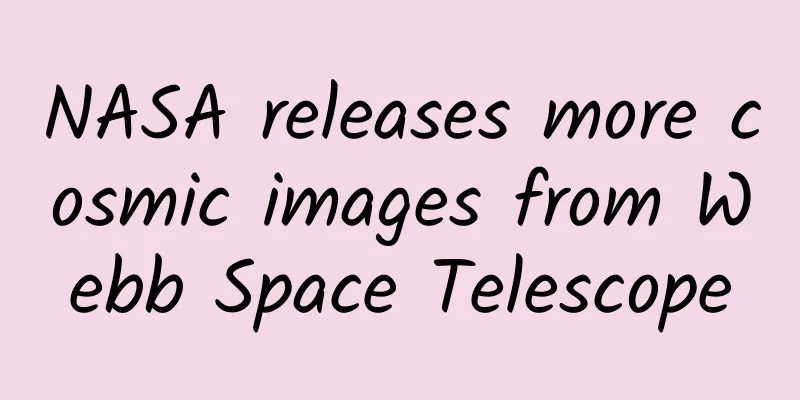Twinkle, twinkle little star, the sky is full of "little" stars

|
"Twinkle, twinkle little star, the sky is full of stars." In the night sky, we can see about 6,000 stars with the naked eye, most of which are stars that can emit light by themselves like the sun. (Planets do not emit light, and some planets can only be seen by us by reflecting the light of stars.) Today, we will talk about the story of the sky full of stars. The brilliant Milky Way (photo taken by astronomy enthusiast Huang Dandan) [The "constellations" composed of stars are not used for fortune-telling] Besides the sun, what other stars can you name? Sirius? Betelgeuse? Fomalhaut? Professional stargazers will also tell you: Sirius is in Canis Major, Betelgeuse is one of the seven White Tigers, Fomalhaut is in Piscis Austrinus... What do stars have to do with constellations? (Compared to the "horoscope" and "constellation matching" that are just topics of conversation after dinner, "constellation" is really a serious concept!) In order to arrange the "seats" of the stars in the sky, people used imaginary lines to connect the bright stars to form various shapes, artificially dividing the starry sky into several areas. These shapes, together with the celestial regions where they are located, are called "star officials" in China and "constellations" in the West. In ancient China, the starry sky was divided into three celestial palaces (Zihui, Taihui, and Tianshi), four symbols (Eastern Azure Dragon, Western White Tiger, Southern Vermillion Bird, and Northern Black Tortoise), and twenty-eight constellations, which included a total of 283 stars. In 1928, the International Astronomical Union (IAU) determined 88 constellations based on Western constellations, of which 13 are on the ecliptic. The ecliptic refers to the path that the sun takes in the sky as it orbits once a year as seen from the earth. This is the effect of the earth's revolution around the sun [1]. In addition to the constellations with the same name as the well-known "Zodiac", another constellation that the sun passes through on the ecliptic is Ophiuchus, which is located north of Scorpio and Sagittarius as seen from the earth. Initially, people used constellations to determine time. The ancient Babylonians evenly divided the ecliptic into 12 segments (corresponding to 12 constellations), and the sun stayed in each segment for one month. The ancient Egyptians predicted the flooding of the Nile River based on the time when Sirius appeared on the eastern horizon. In ancient China, the "Heguanzi" recorded the one-to-one correspondence between the handle of the Big Dipper pointing to the east, south, west, and north and spring, summer, autumn, and winter, which effectively guided the agricultural production at that time. Later, people discovered the navigation function of constellations. "Looking at the Big Dipper at night to know the north and south" means that the Big Dipper can be used to find the North Star and thus identify the direction (see Figure 2). From the 15th to the 17th century, European fleets around the world developed the new capitalism while also developing the maritime industry. In the vast ocean, there are no reference points, but the constellations in the sky are not only unique in shape, but also easy to observe, which is very suitable for navigation for the fleet at that time. [Little Knowledge] The ancient Babylonian way of dividing the ecliptic is the origin of the popular constellation date table. However, under the current constellation division standard, the sizes of constellations vary greatly, and the time the sun stays in each constellation is inconsistent. It only stays in the smallest Scorpio for 7 days, and stays in the largest Virgo for 44 days and 8 hours. Therefore, the "constellations" that everyone is familiar with are not the same as the constellations in astronomy. Figure 2 The Big Dipper and the North Star (schematic diagram) In the western constellations, the North Star and the Big Dipper are located in the Ursa Minor and Ursa Major respectively. Because the Earth's rotation axis basically points to the North Star, the celestial body visually rotates around the North Star once a day. The star pointed to by the line connecting the two stars at the mouth of the dipper extending five times is always the North Star. When the Big Dipper is below the horizon, you can use the five W-shaped stars of Cassiopeia to find the North Star. Zheng He led his fleet to the Western Ocean seven times, using the "star-pulling technique" to complete extremely difficult and complex voyages, creating a miracle in the history of world navigation. The techniques described in the "Star-pulling Chart for Crossing the Ocean" such as "observing the rising and setting of the sun and moon to distinguish east and west, and the height of the stars to measure distance" are to use the sun, moon and stars to determine the geographical location and navigation direction of the ship. The principles involved include "the earth rotates from west to east, causing the sun and moon to rise in the east and set in the west" and "the height of the North Star is equal to the local latitude" and other mysteries of the starry sky. [100,000 years ago, the Big Dipper did not look like this] Because of the visual projection effect, the stars that form the vivid patterns in the constellations appear to be on the same plane, but in fact their distances from us may vary greatly. Therefore, there may be no physical interaction between the stars in the same constellation. Still taking the Big Dipper as an example, Yaoguang and Tianshu are 101 and 124 light years away from the Earth respectively (as shown in Figure 3), which is 20 to 40 light years farther than the other five stars. It takes more than a hundred years for the light they emit to reach the Earth. Figure 3 The distance between the Big Dipper and the Earth [3] (schematic diagram) The closest star to the solar system is Proxima Centauri, a member of the Alpha Centauri system , which is about 4.2 light years away from the Earth. The Alpha Centauri system is the "solar system" where the Trisolarans described by Liu Cixin survive, and is also the final migration destination of the Earthlings in the science fiction movie "The Wandering Earth". Stars in the sky are not stationary; they move very fast. For example, the sun moves around the center of the Milky Way at a speed of 238 kilometers per second[4], and it takes about 250 million years to complete one orbit. If we add the speed of the earth’s rotation and revolution, then it is not difficult to understand why “sitting on the ground and traveling 80,000 miles a day”. Since the stars move so fast, why do we feel that they are constant? The main reason is that most stars are too far away from us. They move in the universe for hundreds of years, and we can hardly detect their position changes. However, after a long period of accumulation, their position changes will be more obvious. For example, the shape of the Big Dipper is not the "bowl shape" 100,000 years ago and 100,000 years later (as shown in Figure 4). Figure 4 Schematic diagram of the shape of the Big Dipper at different times (Image from website [5], modified by the author) [In the world of stars, the sun is just a little brother] The sun seen from Earth is the largest and brightest celestial body in the sky. In fact, it is just a little brother in the star world. There are many stars that are larger and brighter than the sun. There are hundreds of billions of stars in the Milky Way alone, but they are too far away from us and their starlight is too weak. People know very little about the nature of these unreachable stars. Since the birth of astrophysics, especially since the 19th century, due to the widespread application of spectroscopy, photometry and photography techniques in the observation and research of celestial bodies, people have gradually understood the structure, chemical composition and physical state of celestial bodies. In the early 20th century, Danish astronomer Hertzsprung and American astronomer Russell discovered that stars have a very significant distribution pattern in a two-dimensional image of luminosity (i.e., luminous ability) and temperature . This image is called the Hertzsprung-Russell diagram, or HR diagram for short. The HR diagram can clearly reflect the "status" of a star, such as its size and mass, luminous ability, and seniority (i.e., evolutionary history), and is one of the most important illustrations in astronomy. Figure 5 Hertzsprung-Russell diagram, with the horizontal axis representing surface temperature or color and the vertical axis representing luminosity (Image from website [6], modified by the author) As shown in Figure 5, stars can be roughly divided into the following types: Main sequence stars: Most (more than 90%) stars are distributed in a narrow belt from the upper left to the lower right (main sequence). The stars in this belt are called main sequence stars, and they are in the hydrogen-helium nuclear fusion stage. The higher the temperature of the star, the bluer the color and the stronger the luminous ability. Conversely, the redder the color, the weaker the luminous ability. Stars are most stable in this stage and stay the longest (more than 90% of their life is in this stage). White dwarf: The stars in the denser area on the lower left are hot, bluish-white, very weak in luminosity, and small in size, so they are called white dwarfs. This area is the "destination" of low-mass stars after their death. Giant star & supergiant star: The stars in the denser area on the right side of the main sequence have a higher luminosity but a lower temperature. When the hydrogen in the center of the star is burned out and the nuclear fusion of heavier elements is ignited, the star begins to become "puffy" and enters this area, so it is called a giant star. The upper left of it is called a supergiant star. According to the color of stars, Harvard Observatory divides stars into seven types: O, B, A, F, G, K, and M. Each type can be divided into 10 subtypes, namely the Harvard classification. Since the color of stars is related to the effective temperature of the star surface, this classification is divided according to the order of decreasing effective temperature, as shown in Figure 5 (horizontal axis). For example, the sun belongs to the G type star, which is yellow, and Vega and Sirius are A type stars, which are blue-white in color. According to the luminous ability, stars can be divided into seven types: supergiants (type I), bright giants (type II), giants (type III), subgiants (type IV), dwarfs (type V), subdwarfs (type VI), and white dwarfs (VII). Here, giants and dwarfs refer to the size of luminosity. The ones with large luminosity are giants, and the ones with low luminosity are dwarfs. The Harvard classification is a univariate classification based on color or temperature, and the position of stars cannot be well determined in the two-dimensional Hertz-Russell diagram. To this end, in the 1940s, American astronomers Morgan (W. Morgan) and Keenan (P. Keenan) proposed a binary classification system based on temperature and luminosity (the MK classification system), which can accurately locate the position of stars in the Hertzsprung-Russell diagram. For example, the sun is of type G2V. The sun is a typical dwarf star. There are stars in the universe that are hundreds of millions of times larger than the sun, or even larger. For example, UY Scuti is a red supergiant in the "twilight" period of a star. The latest research shows [7] that the radius of this star is 755 times that of the sun (see Figure 6), equivalent to 430 million suns, and its luminous power is 87,000 times that of the sun. Because it is 5,100 light-years away from us, even though it is huge, it can only be seen as a small bright spot on Earth. Figure 6 Comparison of star sizes (schematic diagram). The Sun and Sirius are both dwarf stars (Sirius's luminous power is about 25 times that of the Sun), while Pollux and Arcturus are both orange giants, and UY Scuti is a red supergiant (their luminous powers are about 40, 170, and 87,000 times that of the Sun, respectively). The inner core regions of these giants have basically exhausted the hydrogen element through nuclear fusion (Picture from the website [8], modified by the author) Astronomers generally use apparent magnitude to describe the brightness of stars. The smaller the magnitude, the brighter the star. The apparent magnitude of a star is mainly determined by three factors: (1) the star's own luminous ability, which is mainly determined by the star's mass; (2) the distance of the star. For stars with the same luminous ability, the farther away they are, the dimmer they are; and (3) the interstellar medium between the star and us. Due to physical processes such as refraction and scattering, the interstellar medium (such as dust) absorbs the blue component of the light waves passing through it, causing reddening and weakening effects, resulting in changes in the color and brightness of the star. Taking into account a variety of factors, the brightest star in the night sky is Sirius (Venus is the brightest planet), which is clearly visible in the Canis Major (near Orion) in the winter night sky. Conclusion After reading this article, should the lyrics we are familiar with be changed to this? "Twinkle, twinkle little star, the sky is full of 'little' stars..." Then the question arises: where do the stars in the sky come from? Let's wait for the next article to find out. |
>>: When did elephants disappear in Zhejiang?
Recommend
Apple iPad lost to "free"
Once the iPad was launched, it posed a great thre...
How to make an English check-in mini program? How much does it cost to make a small program?
How to make an English check-in mini program? How...
The highest level of operation is to achieve great results with little effort. Let’s talk about the cost awareness of operators!
I must single this out. The highest level of an o...
No open source, no reliability! AppCan will continue to open source
As cloud computing, big data, and mobile Internet...
SEO order-taking platform, what is the order-taking process for SEO outsourcing services?
Many people who are good at SEO like to provide S...
Musk: I don't expect others to recognize me
People like to classify Elon Musk and Apple found...
What Pixels Wars Brings to Our Thoughts
On July 24, the game-themed comedy film "Pix...
Upengpule's Coming-of-Age Ceremony Launches a New Interactive TV Business Model with "Upeng Cloud"
From 2006 to 2016, it has been 10 years since You...
Unmanned driving systems are really hard to understand. This article tells you the answer
Nowadays, unmanned driving technology is usually ...
Xiaomi Note: A touchstone for Xiaomi’s entry into the mid-to-high-end market
Although I had a hunch that Xiaomi would not rele...
Tik Tok operation plan and strategy skills
The popularity of Douyin is unquestionable, so ho...
You must know the cleaning tips for private female vibrators
How to properly clean and maintain a female vibra...
Papi Jiang has gained nearly 10 million fans by complaining. What can marketing dogs learn from her?
If you can't get users to praise you, hug you...
The stone actually grew hair?! But the truth is scarier than you think...
In the autumn in Alaska's Glacier Bay Park, p...
After applying this sunscreen, remember to remove your makeup before going to bed...
Did you put on sunscreen when going out on May Da...









